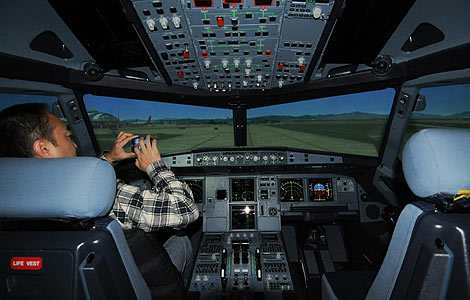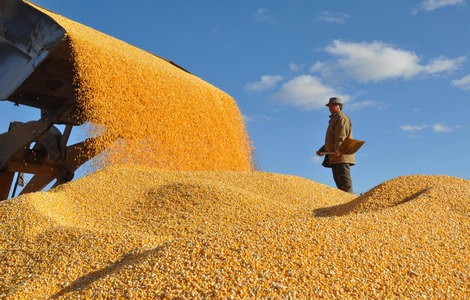
Algae and snails may provide enough oxygen for long missions
Algae and snails are helping scientists develop a system to ensure oxygen and food for astronauts on long space missions.
An experiment, involving two types of algae and three snails, was conducted in the Shenzhou VIII spacecraft in November. The spacecraft orbited for 17 days.
One of the snails survived in a designed micro-ecosystem, signaling preliminary success for the experiment, Liu Yongding, a professor with the Chinese Academy of Sciences and the experiment's designer, told China Daily in an exclusive interview.
Studying and researching algae photosynthesis in space will help scientists design systems that provide oxygen, Liu, from the academy's hydrobiology institute, said.
Astronauts currently rely on oxygen in canisters while food is stored onboard or delivered by cargo spacecraft. But if human beings are to explore Mars or other planets, with missions spanning months or years, then oxygen must be generated through biotechnology, he said.
"Providing oxygen and food through biological methods is the answer," he said.
China plans to build a space station around 2020 and deploy astronauts to live in it for months. It is also eyeing Mars and other planets though manned missions are not yet on the agenda.
Scientists at the institute have developed a system that sees 1.5 cubic meters of algae produce enough oxygen for a man, weighing 70 kilograms, to survive in an enclosed space for one day. The experiments must now determine what role gravity played.
"It still remains a question whether the microgravity in space will have any impact on the photosynthesis of algae and consequently affect the amount of oxygen produced. We need to do experiments in space to find out," he said.
Considering what is at stake, the experiment is quite straightforward. An opaque container is filled with nutrient solution. The container has two parts, separated by a special film that allows penetration of oxygen and water.
In the lower part is euglena, an algae provided by Germany.
In the upper part is chlorella, another algae provided by the institute.
Three snails, belonging to the Bulinus australianus genus and weighing less than 0.1 grams in total, each as small as one-third of a fingernail are added and they form a simple ecosystem.
Algae are the producers, providing oxygen and food (protein). Snails are the consumers, living on the oxygen and consuming the food and microbes carried by the snails help the decomposing process, Liu said.
Fish were originally considered but snails were chosen because of their adaptability and the cramped onboard conditions. "Snails are better equipped to survive in the harsh environment and take up only a small area," he said.
The team chose Bulinus, a genus of small tropical freshwater snails, because it is especially good at surviving in a low-oxygen environment.
Li Xiaoyan, a research fellow on Liu's team, said that the surviving snail was immediately killed and preserved to ensure that conditions on Earth did not alter its state.
As astronauts suffer increased blood pressure and other illness after long stays in space, analysis of the snail sample is expected to help research, she said.
As for the algae, Wang Gaohong, associate researcher on Liu's team, said that the algae are divided into two groups.
One group has been analyzed for photosynthesis activity and the other group is being examined for cultivating.
Together with the data showing the changing process, they are expected to help researchers better understand photosynthesis in space, he said.







